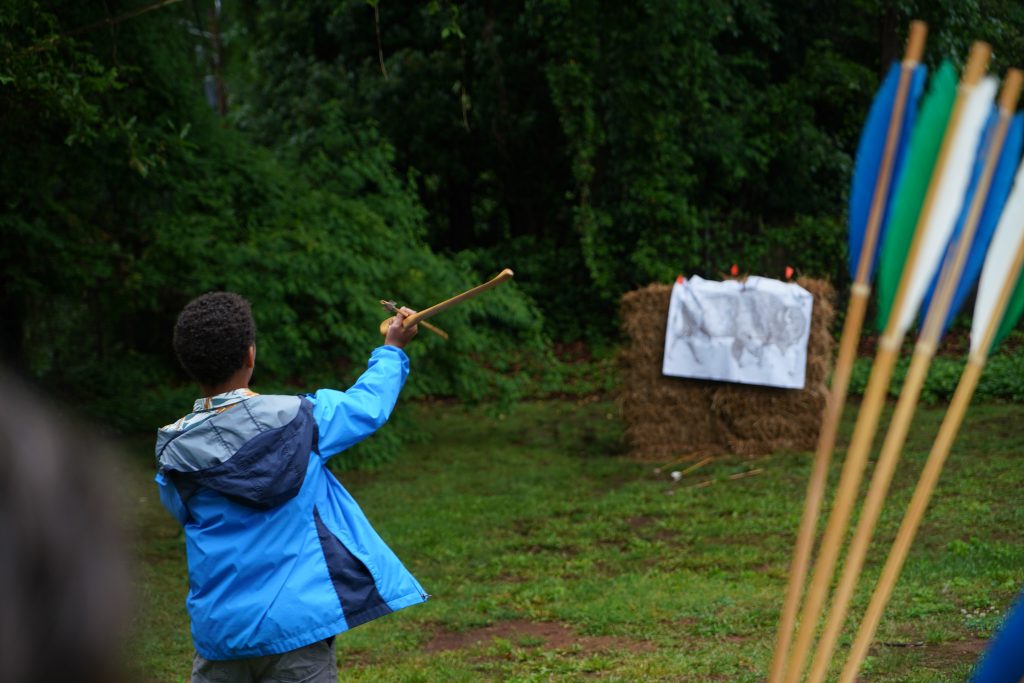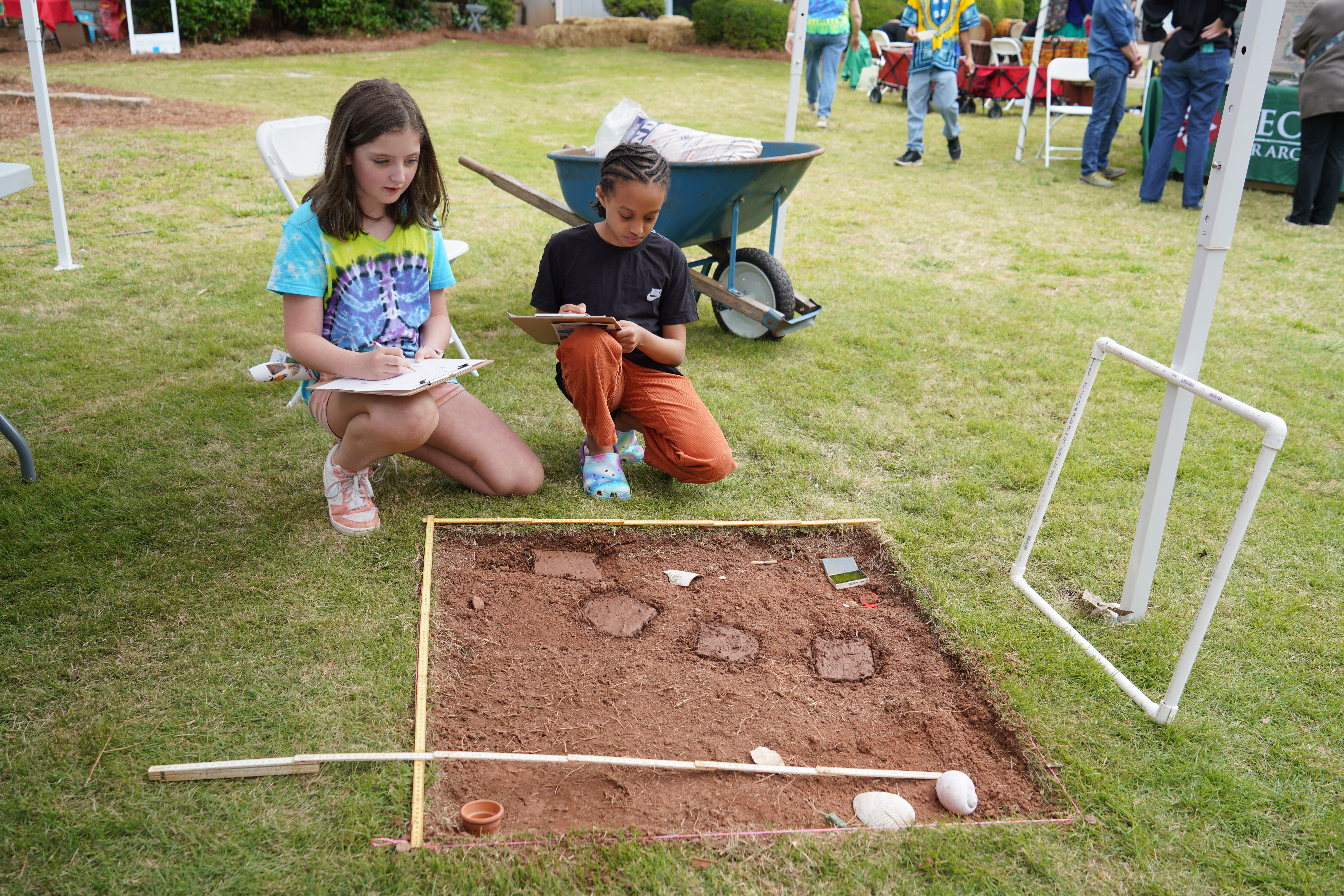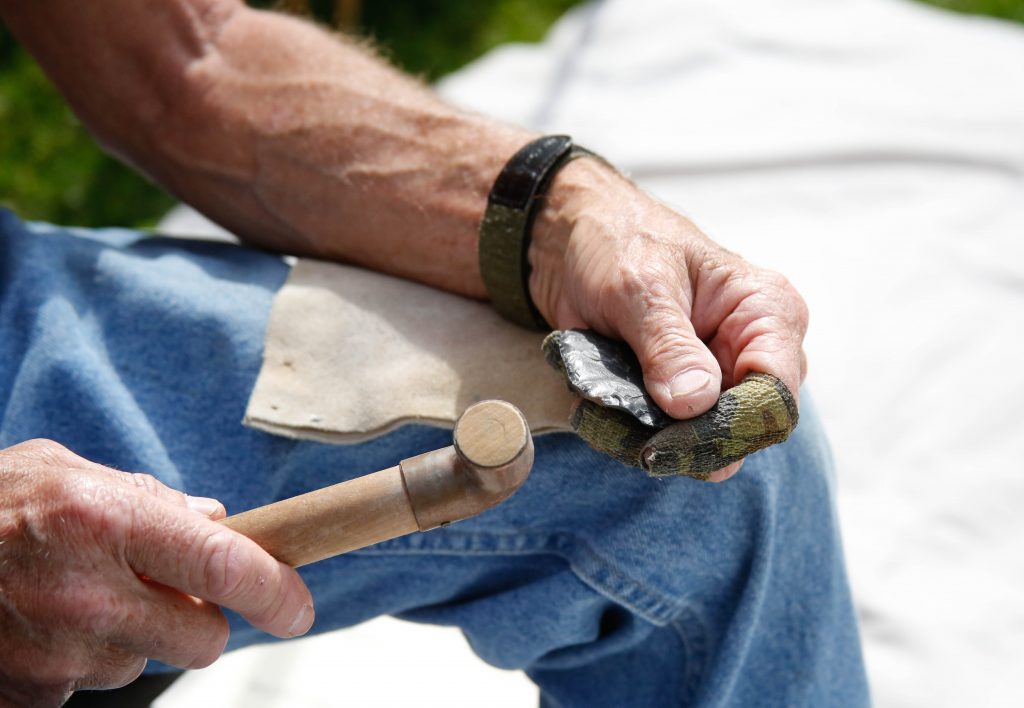Activities
Abby the Archaeobus
Thanks to the Society for Georgia Archaeology (SGA), Abby the Archaeobus spent several years traveling throughout Georgia bringing fun, educational activities to children and adults. Abby toured more than 15,000 miles of Georgia from the mountains to the coast, transporting archaeology to schools, colleges, libraries, festivals, conferences, malls, museums, parks, and historic sites.

In 2019, a mechanical evaluation of Abby determined that it would have been cost prohibitive to get her road worthy again. The SGA began the process of finding a permanent location where she could continue her mission to educate Georgians about our collective histories. In 2020, we approached the SGA about permanently adopting Abby and installing her on our Stone Mountain campus to serve as a static display. The SGA Board of Directors and Officers unanimously approved the transfer of Abby to us. On September 14, 2020, the SGA transferred the ownership of Abby the Archaeobus to us.
You can see Abby the Archaeobus at our annual Archaeology Day on May 3rd! Abby is a great way for children to learn about the past and how archaeologist’s study artifacts, sites, and cultures.
Atlatl
Have you ever seen an atlatl in action? Are you curious about how the atlatl works and why it was used all over the world by ancient peoples? If so, visit Atlatl Alley at NSA’s Archaeology Day!

The atlatl (pronounced at-lat-l) is a dart-throwing tool traditionally made from a shaft of wood with a stone weight. Some atlatls also had a leather loop for the fingers. The atlatl allows a hunter to throw a dart harder, farther, and faster – up to 90 miles per hour!
The Paleoindians (ca. 10,500-800 BC) were the first people to use the atlatl in Georgia. Paleoindians used the atlatl and dart system to hunt large animals known as megafauna. These hunters and gatherers lived in highly mobile small groups that moved seasonally in response to different resources, especially the megafauna (i.e. mammoth, mastodon) they hunted.
Technology is always changing, but tools have always been part of how humans adapted to the natural world. Come to Archaeology Day on May 3rd to learn about primitive tool manufacture from stone tool demonstrator Carl Etheridge. Carl is a local avocational archaeologist and expert flint knapper and will be demonstrating flint knapping at Archaeology Day.
Excavation & Mapping
Ever want to try your hand at archaeology? We will have an excavation area open during Archaeology Day! This activity is geared toward children, and archaeologists will teach them how they excavate, recover, and interpret archaeological sites. Adults will want to visit our archaeology tools table, where we will show the tools we use in the field, from shovels and trowels to smartphones and drones.

When archaeologists dig to collect data, it is called excavating. Excavating differs from digging because it is scientific and controlled. Archaeological excavation is a careful process that involves taking measurements, photographs, and lots of notes. Taking good notes ensures that an archaeologist can describe and interpret the site after it has been excavated. Because archaeology is a destructive science, archaeologists only get one chance to excavate a site. That’s why they have to excavate carefully, take good notes about the site and its surroundings, and photograph artifacts in situ – or where they are found.
One very important step in the investigation of an archaeological site is mapping. Maps help us remember what a place looked like at a certain time. In archaeology, they are a valuable data collection tool. Archaeologists draw detailed sketch maps of every excavation. They draw both plan (horizontal, or from above) maps and profile (vertical, or from the side) maps.
Stone Tools

Lithics are what archaeologists call the stone tools recovered on sites. These are commonly recognized as arrowheads but can be bigger forms such as spearheads or knives. Most often, archaeologists find the small chips of stone, collectively called debris, which is the waste left over from making a point. Stone tools are another technology that is essential to human civilization and found around the world. The primary materials used to make points are flint, chert, and obsidian. The oldest points found in North America are from what we call the Clovis culture and date back some 13,500 years.
Rock Art
Rock art is one of the oldest forms of human expression. People have been drawing and carving on mountainsides, cliff faces, and caves for at least 28,000 years and they still do today. Rock art that is painted on stone is called a pictograph. A petroglyph is a stone carving. Rock art can be symbolic in nature, a means of record keeping, a method of storytelling, or it can be a sign that says, “Hey, I was here!”

Interested in visiting local rock art sites? Take a hike! Stone Mountain’s walk-up trail has over 600 historic petroglyphs that date from the 1860s to present. You can explore them digitally at the Stone Mountain Petroglyphs Path map.
An example of petroglyphs in Georgia is the Track Rock Gap site near Brasstown, Georgia. For more information, visit the Track Rock Gap Petroglyph Site USDA Forest Service web page. Track Rock Gap’s petroglyphs were gouged and vandalized with paint in 2020. The site is temporarily closed while the Forest Service assesses the damage.
But what about pictographs? Painted Bluff in Marshall County, Alabama is a great example of a prehistoric pictograph site that dates from around AD 1400. Painted Bluff was vandalized with graffiti but the Tennessee Valley Authority (TVA) found a way to remove it and preserve the prehistoric pictographs. To learn about the TVA’s work at Painted Bluff, visit TVA: Preserving Places of Peril. Come to NSA’s Archaeology Day and visit the popular Rock Art activity table to decorate your own rock art. We will also have little bowls we made out of quick dry clay on hand for folks to decorate at the Rock Art table.
Tour Georgia’s African American Cultural Heritage!
Click image below to tour African American cultural heritage sites in Georgia!

